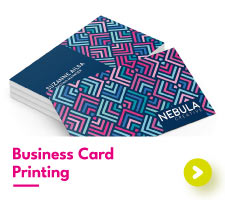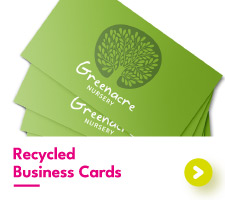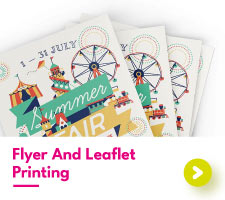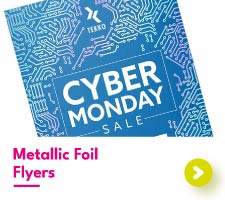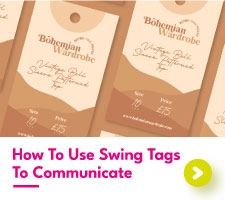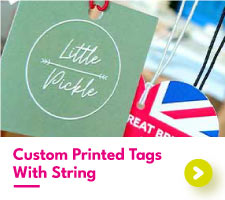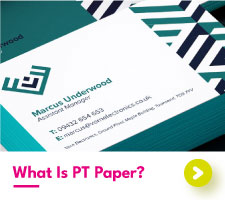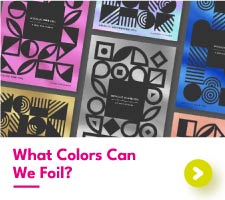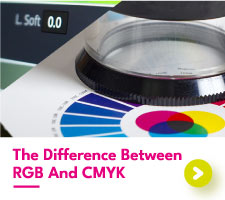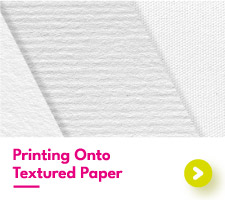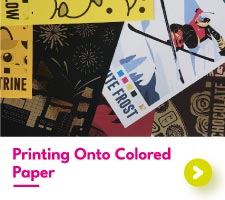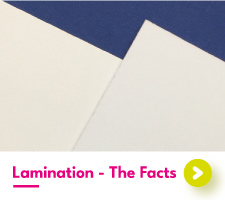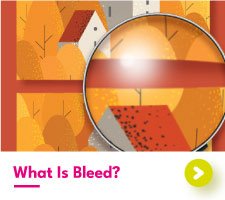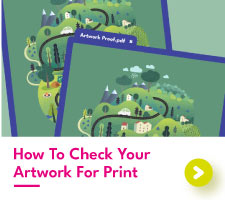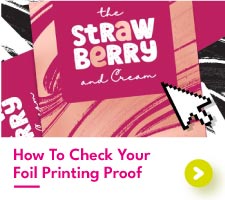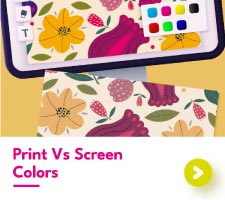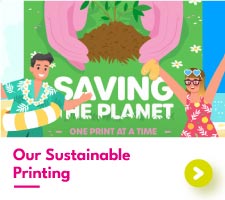Different Types Of Printing Paper
Paper is not just a blank canvas for your words and images. It can also affect the quality, appearance, and durability of your prints. That’s why it’s important to know the different types of paper available, and how to choose the best one for your project. Suppose you're an artist, then you'll need to know which is the best paper for art prints as different papers can vary wildly on results. Don't fret though, we have you covered, read on to become paper proficient!
Types Of Paper

There are now six main different types of paper for printing, (not including the differing weights).
Laser Printing Paper
Laser printing paper is incredibly versatile and can be used for a wide range of purposes, but some of its best uses include:
General documents:
- Text-heavy documents: Laser paper excels at reproducing crisp, sharp text with minimal feathering or bleeding, making it ideal for reports, letters, resumes, contracts, and other text-rich documents.
- Double-sided printing: With its excellent opacity, laser paper prevents show-through from the other side, so you can confidently print on both sides without worrying about text or images appearing through.
- High-volume printing: Laser paper is designed to withstand the wear and tear of high-volume printing, making it a good choice for offices or businesses that regularly print large quantities of documents.
Marketing and presentation materials:
- Brochures and flyers: Laser paper's smooth surface and vibrant color reproduction make it perfect for creating professional-looking brochures, flyers, and other marketing materials that need to grab attention.
- Presentations and reports: For important presentations or reports, laser paper can elevate the quality of your visuals with its sharp lines and accurate color representation.
- Business cards and greeting cards: With its ability to handle detailed graphics and vibrant colors, laser paper is a great choice for creating high-quality business cards and greeting cards that make a lasting impression.
Creative applications:
- Photos and graphics: While not as good as dedicated photo paper, laser paper can still produce decent photo prints and graphic images, especially with higher-quality paper and printers.
- Crafting and scrapbooking: Laser paper's versatility makes it suitable for various crafting projects, such as creating cardstock for scrapbooking, invitations, or decorations.
- Temporary tattoos: Certain types of laser paper can be used for temporary tattoo creation with compatible transfer sheets and printers.
Ultimately, the best use for laser printing paper depends on your specific needs and budget. Consider factors like the type of documents you print most often, the desired print quality, and the level of professionalism you want to achieve.
Inkjet Printing Paper

Unlike laser printing paper, inkjet printing paper has a wider range of specialized types, each excelling in specific areas. Here's a breakdown of what inkjet paper is best used for, depending on its key features:
General Print:
- Bright white inkjet paper: Ideal for everyday documents like reports, letters, resumes, forms, and presentations. Produces high-contrast text with minimal ink bleed.
- Matte inkjet paper: Offers a smooth, non-reflective surface, perfect for everyday printing with a focus on text and graphics. Colours appear natural and details are sharp.
- Multipurpose inkjet paper: A good all-rounder for mixed content, handling both text and images well. It's slightly thicker than standard paper, providing a touch of premium feel.
Photo Printing:
- Glossy inkjet photo paper: Creates vibrant, high-gloss photos with rich colors and sharp details. It is ideal for showcasing your best photography or printing images for framing.
- Luster inkjet photo paper: Offers a subtle sheen, balancing the vibrancy of glossy with the reduced glare of matte. Great for everyday photo printing and portfolio presentations.
- Matte inkjet photo paper: Provides a textured, non-reflective finish, enhancing the artistic feel of photographs. Ideal for black and white prints or adding a vintage touch.
Creative Applications:
- Canvas inkjet paper: Mimics the look and feel of canvas for professional-looking artwork prints. Great for reproducing paintings, illustrations, or photo collages.
- Sticker inkjet paper: Creates durable, water-resistant stickers for labeling, decorating, or personalising objects. Choose from glossy or matte finishes to match your project.
- Transfer inkjet paper: Allows you to transfer printed designs onto fabric, wood, ceramic, and other surfaces for unique DIY projects. Available in light and dark transfer sheets.
Speciality Print:
- Watercolour inkjet paper: Features a textured surface mimicking watercolor paper, allowing for smooth blending and absorption of ink, perfect for printing your digital watercolor art.
- Greeting card inkjet paper: Thicker and more textured than standard paper, ideal for creating high-quality, handmade greeting cards with a premium feel.
- Art paper inkjet paper: Designed for high-end fine art reproductions, offering exceptional color fidelity, archival quality, and a textured surface for a museum-like look.
Remember, the best inkjet paper for you depends on your specific needs and desired outcome. Consider the type of content you're printing, your budget and the preferred finish to choose the perfect match.
Cardstock

Thanks to its sturdy yet flexible nature, Cardstock shines in various creative endeavors! Here are some of its best uses:
Paper Crafting and Cardmaking:
- Card Bases: The most popular use, as cardstock forms the sturdy foundation of greeting cards, invitations, and other paper creations.
- Embellishments and Die-cuts: It's perfect for intricate cutting with crafting machines, creating beautiful shapes and decorations for your projects.
- Layers and Accents: Add depth and dimension to your designs by layering different colors and textures of cardstock.
Scrapbooking and Mixed Media:
- Page Backgrounds: Create a strong base for your scrapbook layouts or mixed media artworks.
- Journaling Tags and Pockets: Craft sturdy pockets and embellishments to enhance your journaling experience.
- Stenciling and Layering: Add texture and patterns with stencils or layer different cardstock elements for a unique look.
Other Creative Applications:
- Origami and Paper Sculpting: The heavier weight of cardstock allows for more intricate folding and sculpting projects.
- Decorations and Gift Boxes: Make sturdy banners, garlands, gift boxes, and other decorative elements.
- Party Props and Signs: Create vibrant and durable photo booth props, table signs, and party decorations.
Additionally, cardstock comes in a variety of options:
- Weight: Choose from lighter weights for layering and embellishments to heavier weights for sturdy bases and boxes.
- Finish: Matte, glossy, glitter, metallic, and textured finishes cater to different aesthetic preferences.
- Colour: A vast array of colors and patterns allows you to match any theme or design.
Ultimately, the possibilities with cardstock are endless! Explore your creativity and discover new ways to incorporate this versatile material into your projects.
Thermal Transfer Paper
This is not your ordinary paper. It’s thick, it’s tough, and it’s made for a special job. You’ll find it in label printers and receipt machines, where it works with a heated ribbon to create lasting prints. The paper has tiny holes that soak up the melted ink like a sponge. That’s how it makes sure your labels and receipts don’t fade away.
Thermal Transfer Paper is very limited in its use-case however the one thing it does, it does well.
Photo Paper
Photo paper shines brightest when it comes to showcasing your photographs! Its qualities elevate prints to a whole new level, making it the ideal choice for:
High-Quality Prints:
- Sharing memories: Bring your captured moments to life with vibrant colors, fine details, and sharp contrast. Perfect for creating photo albums, framed prints, or gifting personalized photos and postcards.
- Portfolio presentations: Make a professional impression with stunning prints that highlight your photography skills. Ideal for exhibitions, client presentations, or online portfolios.
- Artistic expression: Explore the artistic potential of your photographs with different finishes and textures to enhance their mood and impact.
Specific Types and Uses:
- Glossy Photo Paper: Boasts vibrant colors and sharp details, ideal for landscapes, vibrant scenes, and high-contrast images.
- Luster Photo Paper: Offers a subtle sheen, balancing vibrancy with reduced glare, suitable for everyday photo printing and portfolio presentations.
- Matte Photo Paper: Provides a textured, non-reflective finish, enhancing the artistic feel and adding depth to black and white prints or vintage-style photos.
- Metallic Photo Paper: Creates a shimmery, eye-catching effect, perfect for special occasions or adding a touch of glamour to portraits.
Choosing the Right Photo Paper:
- Consider the image content: Match the paper finish to the mood and style of your photograph.
- Think about display: Glossy is great for unframed prints, while matte is ideal for framing due to reduced glare.
- Printer compatibility: Ensure the paper type matches your printer's capabilities.
Photo paper elevates your photography from digital files to tangible treasures. It allows you to preserve precious memories, share your artistic vision, and create lasting impressions. So go ahead, unleash your creativity, and bring your photos to life with the magic of photo paper!
Copy Paper
While most people assume copy paper is solely for making copies, it's quite versatile and has a range of uses beyond the copier! Here's a breakdown of what copy paper excels at:
Everyday Printing:
- Text-heavy documents: Copy paper's smooth surface and opacity make it fantastic for printing reports, letters, resumes, contracts, and other text-rich documents. You'll get crisp, sharp text with minimal ink bleed or show-through.
- Double-sided printing: With its good opacity, copy paper allows for confident double-sided printing without text or images on one side showing through to the other.
- General office tasks: Whether it's printing notes, outlines, drafts, or internal documents, copy paper provides a cost-effective and reliable option for everyday office needs.
Creative Applications:
- Practice sketches and drawings: Its affordability and good surface make copy paper perfect for practicing your drawing skills, trying out new techniques, or brainstorming visual ideas.
- Storyboarding and layouts: It's ideal for planning out projects, organizing ideas, and sketching rough visuals with pencils, pens, or markers.
- Scrapbooking and cardmaking: You can use copy paper as a base for card layers, create templates for embellishments, or even print patterns and designs directly onto it for a DIY touch.
Other Useful Functions:
- Notepad substitute: When you're in a pinch, copy paper can be folded or stapled into a makeshift notepad for jotting down notes or capturing quick ideas.
- Crafting and wrapping: Use copy paper for creating patterns, templates, or stencils for various craft projects. It can also be used for wrapping small gifts or as an inner layer for decorative packaging.
- Cleaning and degreasing: Copy paper can be crumpled and used to absorb spills or clean greasy surfaces like windows or tools.
Things to Consider:
- Brightness: Paper brightness affects the vibrancy of printed colors. For general text printing, standard brightness (around 92%) is sufficient. Higher brightness options are better for image-heavy documents.
- Printer compatibility: Most copy paper works with inkjet and laser printers, but check the compatibility label for optimal results.
Ultimately, copy paper's versatility and affordability make it a valuable tool for various everyday tasks, from essential document printing to creative exploration and even household hacks. Don't underestimate its potential beyond the copier!
Size Matters
There’s more to printer paper than just the type. Size matters too, depending on what you want to print. A4 is the most popular paper size in the world, but it’s not the only one. There are other sizes, from A0 to A10, and they have a cool trick. The bigger the A number, the smaller the paper. And if you cut or fold a paper in half, you get two papers of the next size down.
For example, if you take an A1 paper sheet and fold it in half, you get two A2 papers. Cut one of those in half, and you get two A3 papers. Cut one of those in half, and you get two A4 papers, and so on until you reach a tiny A10. Here's a quick rundown of the sizes in both metric and imperial.
Paper Size Guide

These are standard paper sizes, however, where edge-to-edge printing may be required (certificates, posters, and flyers for example), you would need to look into SRA3 Paper. For in-depth detail on that, have a look at SRA3 paper blog article for all the information you need.
| Paper Size | MM (Width) | MM (Height) | Inches (Width) | Inches (Height) |
| A1 | 594 | 841 | 23.4 | 33.1 |
| A2 | 420 | 594 | 16.5 | 23.4 |
| A3 | 297 | 420 | 11.7 | 16.5 |
| A4 | 210 | 297 | 8.3 | 11.7 |
| A5 | 148 | 210 | 5.8 | 8.3 |
| A6 | 105 | 148 | 4.1 | 5.8 |
| A7 | 74 | 105 | 2.9 | 4.1 |
| A8 | 52 | 74 | 2.0 | 2.9 |
| A9 | 37 | 52 | 1.5 | 2.0 |
| A10 | 26 | 37 | 1.0 | 1.5 |
Paper Weights:
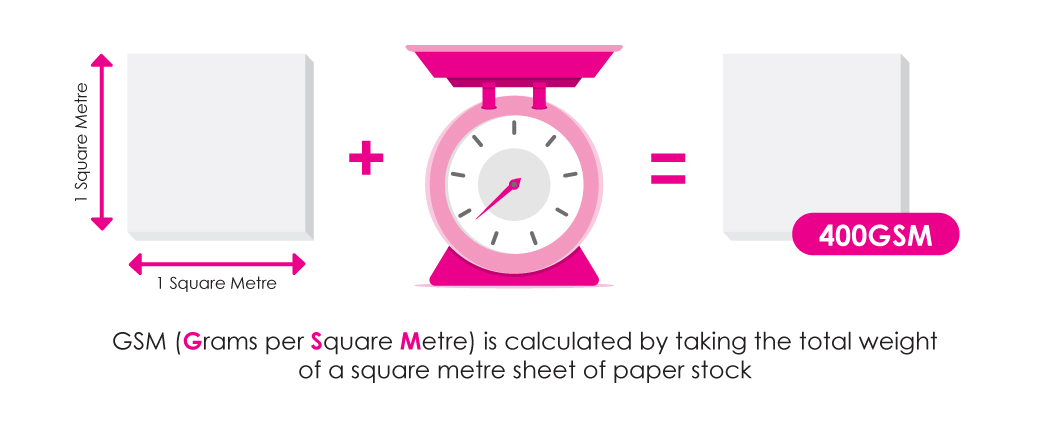
While the weight of different printing paper types won’t have much impact on the printing process, it will significantly impact how the finished product looks. Paper weight is measured in GSM which stands for grams per square metre. Different types of paper have different GSM values, depending on the thickness and density of the material. Here is a quick breakdown of some weights, but if you would like a more in-depth explanation we have an excellent article on GSM paper here.
90gsm: If you want to save some money and still print something that looks classy, go for 90gsm paper. It’s not too thin, not too thick, and it won’t let the ink seep through. Plus, it can handle some color and small images without losing quality.
135gsm: This paper is light and breezy, perfect for spreading the word about your business or event. It’s easy to fold and distribute, and it won’t get wrinkled in a hurry. You can print some nice graphics and text on it, and it’ll catch people’s attention.
175gsm: This paper has some weight and substance to it, ideal for making a lasting impression. It’s sturdy and smooth, and it can take a lot of ink without smudging. Whether you need high-resolution photos or vibrant colors, this paper will deliver.
250gsm: This paper is like the cover of a paperback book - thick, glossy, and eye-catching. It’s great for printing something that you want people to keep and admire, like a brochure or a portfolio. It’ll resist folding and creasing, and it’ll make your work look professional and polished.
300gsm: This paper is the ultimate choice for printing covers for booklets or magazines. It’s thick and rigid, and it won’t bend or tear easily. It can handle any design or image you throw at it, and it’ll make your publication look sleek and sophisticated.
Over The Finish Line

Do you like your paper smooth or shiny? Either way, you should think about the type of coating on your printing paper: aqueous, UV, or varnish. Aqueous coating is made from water, so it’s good for the planet and it keeps your paper clean and smudge-free. If you want your paper to last long, aqueous coating is a smart and cheap choice.
If you want your paper to look fancy, go for a UV coating. It’s super shiny, and it’s made by putting a thick goo on the paper and then zapping it with UV rays. It’s tough and stunning, and it won’t wear out easily. It’s perfect for paper that needs to be strong and beautiful. A UV coating makes the ink look sharp and clear, and your text and pictures will stand out.
A varnish coating is like a layer of nail polish for your paper. It’s a liquid that you put on top of the ink to make it last longer and look better. It’s great for a paper that needs to be professional and formal, like letterheads and documents. A varnish coating will keep your print from fading or smudging, and it will give your paper a smooth and glossy finish.
Proper Printing Paper Picking
Picking the perfect paper for your project can make it shine (literally in some cases!). Before you choose from the many types of printing paper, think about what you’re making and how you want it to look. Also, check if your paper works well with your printer. You might like one kind of paper, but another one might be better for your needs.
And don’t forget to consider if you’re printing just words, or also pictures and colors. These tips should help you find the right paper for your needs. Want any further information? Then get in touch with our team today.

 UK
UK FR
FR
